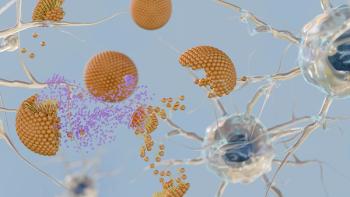
New Analytical Instrument Could Change Vaccine Development Through Faster Viral Detection
Research by Thermo Fisher Scientific and LumaCyte suggests that LumaCyte's Radiance instrument offers the ability to rapidly analyze viral vaccines to speed development and production and ensure their effectiveness.
A faster, more objective analytical tool to rapidly measure viral infectivity could change vaccine development and production. In a study
The study authors demonstrate two situations for improved detection of viral infection of vesicular stomatitis virus (VSV) in a mammalian cell line. VSV is used for vaccine production, including several candidate vaccines against emerging infectious diseases such as the Ebola, Lassa, and Nipah viruses. The first is for cells that are already infected with VSV during an ongoing bioprocess that can be analyzed immediately using Radiance (5–10 min instrumental process and analysis time) representing a 400- to 800-fold reduction in the time required to obtain an answer (72 hours in the conventional end-point dilution process). LumaCyte reports that this capability offers researchers real-time monitoring of viral infectivity, something which currently is not possible using standard techniques; this allows near real-time process control and monitoring.
In the second situation, rapid viral infectivity determination for crude or purified virus solutions, where samples of the preparation can be taken, applied to suspension or adherent cells and then incubated for a 3–7 times shorter period (depending on the virus and cells used) before automated analysis using the instrument. The authors showed how VSV infectivity measurements based upon laser force cytology (LFC) and the instrument were more sensitive and yielded results in 16 hours versus the 72 hours required using conventional method, endpoint dilution. In addition to the shorter incubation period, the results do not rely on operator interpretation and require less labor, further reducing costs.
Many viral vaccines use live infectious viruses to generate an immune response that later protects vaccinated individuals from a new infection with the same or similar virus. Therefore, the measurement of infectious virus concentration is critical for vaccine safety and efficacy and is used throughout R&D, biomanufacturing, release testing, and clinical trials.
“Current techniques for measuring viral infectivity are generally slow, labor-intensive, and difficult to standardize, which often creates a bottleneck in the development process and makes it more difficult to respond to emerging and rapidly-changing threats such as Ebola, Zika Virus, and Influenza,” LumaCyte stated in a Sept. 12, 2018 press release. “Rapid viral quantification during a response to an emerging infectious disease or pandemic is especially important as delays in vaccine production can hamper efforts to contain the spread of a new pandemic. Many existing systems for viral quantification rely on fluorescently tagged antibodies (labels), that for new viruses could require many months to a year or more to develop and test thoroughly.”
LumaCyte's label-free instrument appears to offer significant improvement over label-based methods and can further enhance researchers' efforts against these growing threats, according to the company.
The instrument is a label-free, automated, high-content cell analyzer and sorter that measures the optical force, size, shape, deformability, and captures images of single cells. By measuring intrinsic biophysical and biochemical properties of single cells, cellular changes due to viral infection can be rapidly, repeatably, and objectively quantitated, LumaCyte reports. LFC is very sensitive to agents that perturb cellular structures or change biochemical composition. High quality viral infectivity measurements can be made in a fraction of the time, labor, and cost of traditional assays such as plaque or endpoint dilution or in near real-time throughout the infection process.
Source:
Newsletter
Stay at the forefront of biopharmaceutical innovation—subscribe to BioPharm International for expert insights on drug development, manufacturing, compliance, and more.




